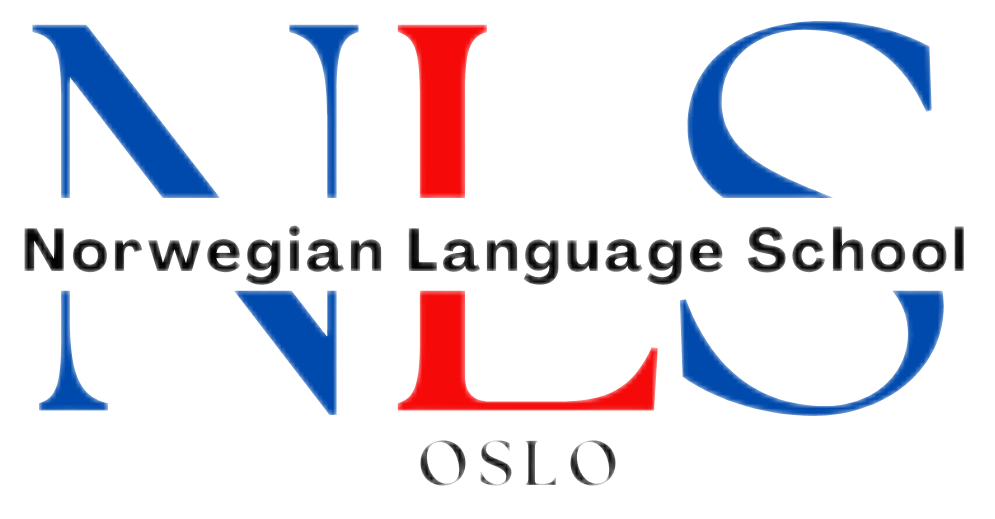

Greetings in Norwegian: Say “Hi” Like a Local
Are you planning a trip to Norway? Wondering how to greet locals and make an authentic connection? Saying “hi” in Norwegian is the perfect way to embrace the local culture and start conversations with ease. But do you know the right word for “hi” in Norwegian? And are there any cultural nuances you should be aware of? Let’s unravel the charming world of Norwegian greetings and discover how to say “hi” like a local.
Table of Contents
ToggleKey Takeaways:
- Learn the basic Norwegian greetings for saying “hi” in different social contexts
- Understand the cultural significance of greetings in Norwegian society
- Explore alternative greetings used by Norwegians in different regions or situations
- Discover the proper etiquette for greetings in business and social settings
- Get ready to impress locals with your authentic Norwegian greeting
Understanding Norwegian Greetings
Before we embark on the journey of discovering the specific word for “hi” in Norwegian, let’s take a moment to appreciate the significance of greetings in Norwegian culture. In Norway, greetings hold a special place in social interactions, serving as a reflection of the warm and friendly nature of the Norwegian people.
Norwegian greetings play an essential role in establishing a connection, whether it be between friends, colleagues, or strangers. Greetings are seen as a way to acknowledge someone’s presence, show respect, and express goodwill. They help create a welcoming atmosphere and set the tone for further conversation and engagement.
“Hei” (pronounced hi) is one of the most commonly used greetings in Norwegian.
“Hei” is a versatile and informal greeting that is used in various social settings. It can be used to greet friends, acquaintances, and even strangers, making it a go-to greeting for Norwegians in their day-to-day interactions.
However, greetings in Norwegian extend beyond just words. Body language, such as eye contact, a warm smile, and a firm handshake, also play a significant role in greeting others. They convey sincerity and contribute to establishing a genuine connection.
Understanding the importance of greetings in Norwegian culture allows us to appreciate the depth of these social interactions. So, let’s dive into the specific word for “hi” in Norwegian and unravel the nuances of this beautiful language.
Basic Norwegian Greetings
When venturing into Norwegian social settings, it’s important to familiarize yourself with the basic greetings used to say “hi” in various contexts. Whether you’re greeting someone formally or informally, understanding the appropriate contexts for each greeting can help you navigate social interactions smoothly and build positive connections.
Formal Greetings
In formal settings such as business meetings or official events, Norwegians often use the phrase “God dag” (Good day) or “God kveld” (Good evening) to greet one another.
For example:
Person A: God dag! Hvordan har du det? (Good day! How are you?)
Person B: God dag! Jeg har det bra, takk. Og du? (Good day! I’m fine, thank you. And you?)
Informal Greetings
In casual social settings among friends, family, or acquaintances, Norwegians commonly use the word “Hei” (Hi) to greet each other.
For example:
Person A: Hei! Hvordan har du det? (Hi! How are you?)
Person B: Hei! Jeg har det bra, takk. Og du? (Hi! I’m fine, thank you. And you?)
Informal greetings can also be accompanied by a smile, a nod, or a handshake, depending on the situation and level of familiarity.
To summarize the basic Norwegian greetings:
| Greeting | Meaning | Usage |
|---|---|---|
| “God dag” | Good day | Formal settings |
| “God kveld” | Good evening | Formal settings |
| “Hei” | Hi | Informal settings |
By familiarizing yourself with these basic Norwegian greetings, you’ll be well-equipped to greet local Norwegians in various social settings. It’s a small gesture that can go a long way in creating a friendly and welcoming atmosphere.
The Word for “Hi” in Norwegian
Now that we’ve explored the importance of greetings in Norwegian culture, let’s dive into the specific word for “hi” in Norwegian. This word is used to greet someone casually and is a common phrase you’ll hear in social interactions in Norway.
The Norwegian word for “hi” is hei. It is pronounced like “hey” in English but with a slightly shorter vowel sound.
Here’s a breakdown of how to pronounce hei correctly:
- The letter “h” is pronounced like the “h” in “hello.”
- The sound “ei” is similar to the long “i” sound in the English word “hi.”
So, when you say hei, it should sound like “hey” but with a shorter vowel sound in the middle. Practice saying it a few times to perfect the pronunciation.
Note: The word hei can also be used to say “hello” in Norwegian, depending on the context. It’s a versatile and commonly used greeting that can be used in both formal and informal settings.
Now that you know how to say “hi” in Norwegian, you’re ready to impress locals with your authentic greeting! Use hei with confidence and embrace the friendly nature of Norwegian culture.
Alternative Greetings in Norwegian
While the word for “hi” in Norwegian is commonly used, there are also alternative greetings that Norwegians use in different regions or situations. These alternative greetings not only expand your vocabulary but also provide insights into the subtle cultural nuances of Norway. Let’s explore some of these alternative ways to greet someone in Norwegian:
- God dag – Meaning “good day,” this greeting is a formal and respectful way to greet someone during daytime hours.
- Hei på deg – This informal greeting is commonly used among friends and acquaintances. It can be translated as “hi to you” and is often accompanied by a smile.
- Halla – A more casual and relaxed greeting, “halla” is often used among young people in informal settings.
- Hallo – Similar to the English “hello,” “hallo” is a versatile greeting that can be used in various social settings.
These alternative greetings offer you a chance to fit in seamlessly with the locals and demonstrate your understanding of Norwegian culture. Remember to consider the context and the relationship with the person you are greeting when choosing which greeting to use.
“Alternative greetings in Norwegian allow you to engage authentically with the locals and embrace the vibrant culture of Norway. Learning these greetings not only shows respect, but also opens doors to meaningful connections with Norwegians.”
Cultural Etiquette in Norwegian Greetings
When it comes to greetings in Norway, understanding the cultural etiquette is key to navigating social interactions with ease and respect. Norwegians place importance on polite and inclusive greetings, and being aware of the proper ways to greet someone can help you make a positive impression. Here are some guidelines to keep in mind:
- Handshakes: In Norway, it is customary to shake hands when greeting someone, whether it’s a formal or informal setting. Maintain eye contact while shaking hands as a sign of respect.
- Personal Space: Norwegians value personal space, so it’s important to maintain an appropriate distance when greeting someone, especially if it’s a first encounter. A friendly smile and nod can suffice for casual greetings.
- Titles and Last Names: Addressing people by their titles and last names is common in formal settings, especially in business contexts. However, in more casual situations, using first names is acceptable.
- Respecting Silence: Norwegians often appreciate silence and value moments of quietude. Don’t feel obligated to fill every conversation with small talk. Embrace comfortable pauses and learn to appreciate the tranquility of the moment.
Remember, Norwegians are generally warm and friendly people, but respecting their cultural norms and customs is essential. By following these guidelines, you can ensure that your greetings are received positively and create a harmonious atmosphere in your interactions. Now, let’s take a look at some common customs and appropriate body language during greetings in Norway:
| Custom | Description |
|---|---|
| Klem | A warm hug, typically used among close friends and family members. |
| Løft av hatten | Removing your hat as a sign of respect when greeting someone older or of higher social status. |
| Standing Straight | Norwegians value good posture, so it’s important to stand up straight and maintain a confident presence when greeting someone. |
| Eye Contact | Make sure to establish and maintain eye contact during greetings as a sign of respect and engagement. |
By embracing these gestures and respecting the cultural nuances of Norwegian greetings, you’ll be able to engage with locals in a way that is authentic and appreciated. So go ahead, greet someone in Norway with confidence and make lasting connections!
Greetings in Business Settings
When it comes to greetings in business settings, it’s important to maintain a level of formality while still reflecting the friendly nature of Norwegian culture. Handshakes are the most common form of greeting and are often accompanied by direct eye contact and a genuine smile. Remember to have a firm handshake, but not too firm, as it may come across as aggressive.
In more formal business settings, it is common to address your Norwegian counterparts using their titles and surnames. For example, if you are meeting Mr. Johnsen, it would be appropriate to address him as “Mr. Johnsen” rather than using his first name.
Here is a list of professional greetings commonly used in Norwegian business culture:
| Greeting | Meaning |
|---|---|
| God dag | Good day |
| Glad i å møte deg | Nice to meet you |
| Velkommen | Welcome |
| Hvordan har du det? | How are you? |
Remember to maintain a respectful and professional demeanor during business greetings, while still being warm and friendly. Understanding and adapting to the cultural norms surrounding greetings in Norwegian business settings can go a long way in building strong professional relationships.
Greetings in Social Settings
When it comes to social settings in Norway, greetings take on a friendly and informal tone, reflecting the warmth and camaraderie among friends, family, and acquaintances. Norwegian culture values inclusivity and community, which is evident in the way people greet each other in everyday interactions.
Among friends and peers, a common greeting is “Hei!” This simple word captures the casual and relaxed nature of social gatherings. It’s a versatile greeting that can be used in various situations, whether you’re meeting up for coffee, attending a party, or simply running into a friend on the street.
Within families, greetings can be even more endearing and affectionate. Parents may greet their children with a warm “Hei, kjære!” meaning “Hi, dear!” while siblings may opt for a playful “Hei, lillesøster!” or “Hi, little sister!” These personalized greetings reflect the close bonds within Norwegian families.
In social settings, it’s common to follow a greeting with a hug or a kiss on the cheek. This physical expression of warmth and familiarity further strengthens the sense of community and connection among individuals.
“Hei! Hvordan har du det?” – “Hi! How are you?”
As Norwegians value equality, it is customary to greet everyone in a group individually, ensuring no one is left out or overlooked. This practice fosters an inclusive and welcoming environment where everyone feels acknowledged and valued.
Common Expressions in Social Settings
- “God morgen!” – “Good morning!” (used until around midday)
- “God dag!” – “Good day!” (used throughout the day)
- “God kveld!” – “Good evening!” (used in the evening)
- “God natt!” – “Good night!” (used when saying goodbye before bedtime)
These expressions are often used as greetings when meeting someone during the respective time of day and can help create a friendly and polite atmosphere in social interactions.
So, the next time you find yourself in a social gathering in Norway, remember to greet your friends, family, and acquaintances with a warm and friendly “Hei!” and embrace the inclusive nature of Norwegian social settings.
Greetings in Tourist Contexts
When visiting Norway as a traveler, it’s important to understand how to greet locals in tourist contexts. By familiarizing yourself with the common greetings used by Norwegian hospitality professionals, you can make a positive impression and show respect for the local culture. Additionally, knowing how to respond appropriately as a visitor will help you navigate social interactions with ease. Let’s explore some useful greetings and responses:
Greeting: “God dag!”
In tourist contexts, Norwegians often use the greeting “God dag!” which means “Good day!” This is an all-purpose greeting that can be used throughout the day and is suitable for both formal and informal settings. It’s a friendly and welcoming way to initiate a conversation with locals.
Greeting: “Velkommen!”
Another common greeting you may encounter in tourist contexts is “Velkommen!” which translates to “Welcome!” This greeting is commonly used in tourist attractions, hotels, and restaurants. When you hear “Velkommen!” from a hospitality professional, feel free to respond with a smile and a simple “Takk” (Thank you).
“God dag! How can I assist you today?”
When interacting with hospitality professionals, such as hotel staff, tour guides, or restaurant servers, it’s common for them to initiate the greeting. Here are a few ways to respond politely:
- Respond with a smile and say “God dag!” or “God morgen!” (Good morning) depending on the time of day.
- Politely acknowledge their greeting with a nod and a friendly “Hei!” (Hello).
- Reply with “Takk, jeg har det bra” (Thank you, I’m doing well) to demonstrate gratitude.
| English Greeting | Norwegian Response |
|---|---|
| Good day! | God dag! |
| Hello! | Hei! |
| Thank you! | Takk! |
| Good morning! | God morgen! |
Remember, being respectful, friendly, and appreciative of the local culture goes a long way when engaging with locals in tourist contexts. Don’t be afraid to greet Norwegians with a warm smile and a simple “God dag!” as you explore the beautiful landscapes and attractions of Norway.
Cultural Significance of Greetings
In Norwegian society, greetings hold a deep cultural significance, reflecting the country’s values of egalitarianism, inclusivity, and community building. The way Norwegians greet each other sets the tone for interpersonal relationships, emphasizing equality and respect.
By exchanging warm greetings, Norwegians establish a sense of connection and foster inclusivity within their communities. Greetings serve as a way to acknowledge and recognize one another, regardless of social status or hierarchy.
The practice of greetings in Norway goes beyond mere politeness; it demonstrates a genuine interest in others and their well-being. It is common for Norwegians to engage in conversations and inquire about each other’s welfare during greetings, deepening the sense of community.
The significance of greetings in Norwegian culture can be seen in various contexts. Whether it’s a casual encounter with friends, a business meeting, or a tourist setting, greetings serve as a bridge to establish rapport and build relationships.
“Greetings in Norwegian society embody the values of equality, inclusiveness, and community, highlighting the genuine interest Norwegians have in connecting with one another.”
The Power of Cultural Awareness
Understanding the cultural significance of greetings in Norway is key for anyone looking to connect with Norwegians on a deeper level. It shows respect for the local customs and values, enhancing cross-cultural communication.
When visiting Norway, take the time to learn the appropriate greetings for each situation. Norwegians appreciate the effort made by visitors to learn their language and customs, and it opens doors to meaningful interactions.
Embracing the cultural significance of greetings in Norway not only enriches individual experiences but also contributes to fostering positive relations between people from different backgrounds.
The Importance of Greetings for Visitors
For tourists in Norway, understanding the cultural significance of greetings is especially important. Mastering a few basic Norwegian greetings can help visitors feel more integrated into the local community and create a positive impression.
Whether it’s a warm “hei” to greet someone casually or a more formal “god dag” in professional settings, using the appropriate greeting shows respect and cultural awareness. It can spark conversations, lead to meaningful interactions, and enhance the overall travel experience.
By embracing the cultural significance of greetings, visitors can connect with locals, share experiences, and build memorable connections during their time in Norway.
Conclusion
In conclusion, learning how to say “hi” in Norwegian is a wonderful way to embrace the local culture and connect with Norwegians authentically. By understanding the different greetings and their cultural contexts, you can navigate social interactions with ease and leave a positive impression. So, next time you visit Norway, don’t forget to greet locals like a true Norwegian!
FAQ
What are Norwegian greetings?
Norwegian greetings are the various ways Norwegians greet each other. They reflect the friendly nature of the culture and play a significant role in social interactions.
How do Norwegians greet each other formally?
Norwegians commonly greet each other formally with phrases like “God dag” (Good day) or “God kveld” (Good evening).
What are some informal Norwegian greetings?
Informal Norwegian greetings include phrases like “Hei” (Hi) or “Hallo” (Hello). These greetings are commonly used among friends and acquaintances.
How do you pronounce “Hei” in Norwegian?
“Hei” is pronounced as “hey” in English, with a short and crisp pronunciation.
Are there alternative greetings in Norwegian?
Yes, there are alternative greetings used in different regions or situations in Norway. Examples include “Morn” (Morning) and “Halla” (Hey).
What is the cultural etiquette in Norwegian greetings?
In Norwegian greetings, it is common to make eye contact, smile, and offer a firm handshake. It is also polite to use the appropriate level of formality based on the context.
How do greetings differ in business settings?
In business settings, greetings tend to be more formal. Handshakes are common, and it’s important to address individuals using their professional titles, if applicable.
What are the common greetings in social settings?
In social settings, Norwegians use friendly and informal greetings like “Hei” (Hi) or “Halla” (Hey). These greetings reflect warmth and camaraderie.
How should I greet locals in tourist contexts?
When interacting with locals in tourist contexts, it is polite to use common greetings like “Hei” (Hi) or “Hallo” (Hello) and respond with a friendly demeanor.
What is the cultural significance of greetings in Norwegian society?
Greetings in Norwegian society reflect egalitarian values, foster inclusivity, and contribute to building strong relationships within communities.
If you want to learn Norwegian, you can register for classes here. We look forward to hearing from you and helping you become fluent in Norwegian.





